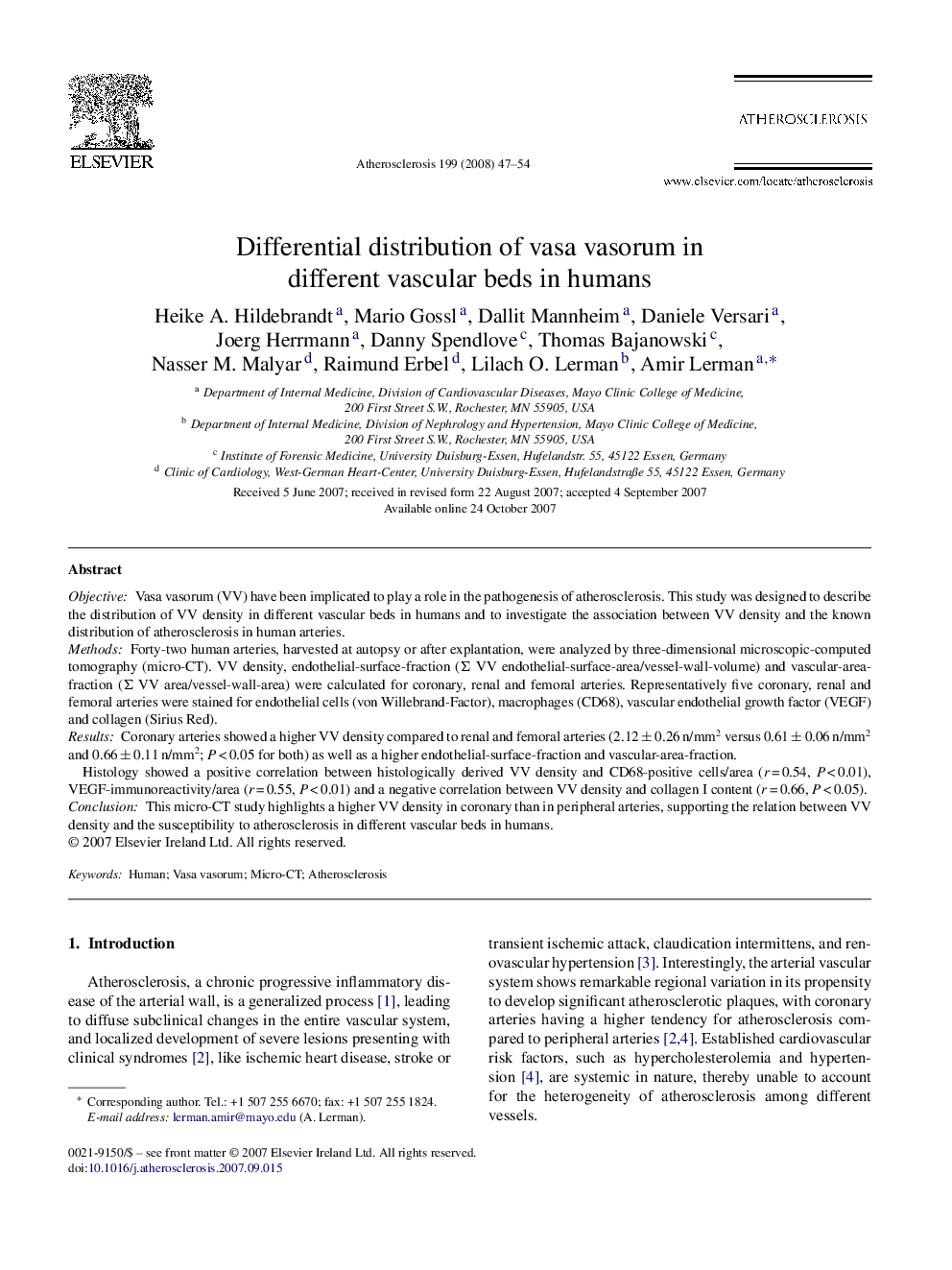| کد مقاله | کد نشریه | سال انتشار | مقاله انگلیسی | نسخه تمام متن |
|---|---|---|---|---|
| 2894087 | 1172426 | 2008 | 8 صفحه PDF | دانلود رایگان |

ObjectiveVasa vasorum (VV) have been implicated to play a role in the pathogenesis of atherosclerosis. This study was designed to describe the distribution of VV density in different vascular beds in humans and to investigate the association between VV density and the known distribution of atherosclerosis in human arteries.MethodsForty-two human arteries, harvested at autopsy or after explantation, were analyzed by three-dimensional microscopic-computed tomography (micro-CT). VV density, endothelial-surface-fraction (Σ VV endothelial-surface-area/vessel-wall-volume) and vascular-area-fraction (Σ VV area/vessel-wall-area) were calculated for coronary, renal and femoral arteries. Representatively five coronary, renal and femoral arteries were stained for endothelial cells (von Willebrand-Factor), macrophages (CD68), vascular endothelial growth factor (VEGF) and collagen (Sirius Red).ResultsCoronary arteries showed a higher VV density compared to renal and femoral arteries (2.12 ± 0.26 n/mm2 versus 0.61 ± 0.06 n/mm2 and 0.66 ± 0.11 n/mm2; P < 0.05 for both) as well as a higher endothelial-surface-fraction and vascular-area-fraction.Histology showed a positive correlation between histologically derived VV density and CD68-positive cells/area (r = 0.54, P < 0.01), VEGF-immunoreactivity/area (r = 0.55, P < 0.01) and a negative correlation between VV density and collagen I content (r = 0.66, P < 0.05).ConclusionThis micro-CT study highlights a higher VV density in coronary than in peripheral arteries, supporting the relation between VV density and the susceptibility to atherosclerosis in different vascular beds in humans.
Journal: Atherosclerosis - Volume 199, Issue 1, July 2008, Pages 47–54